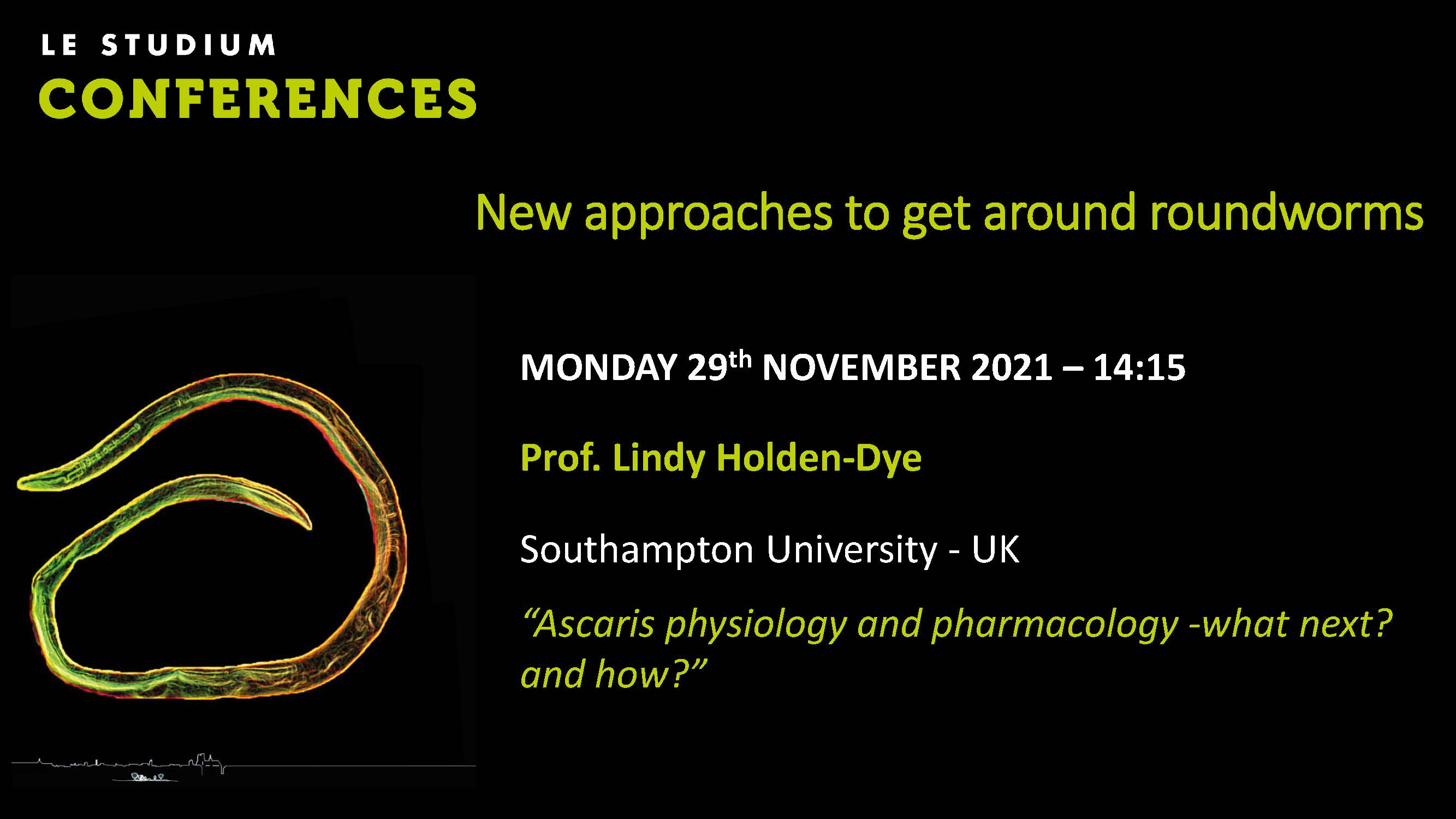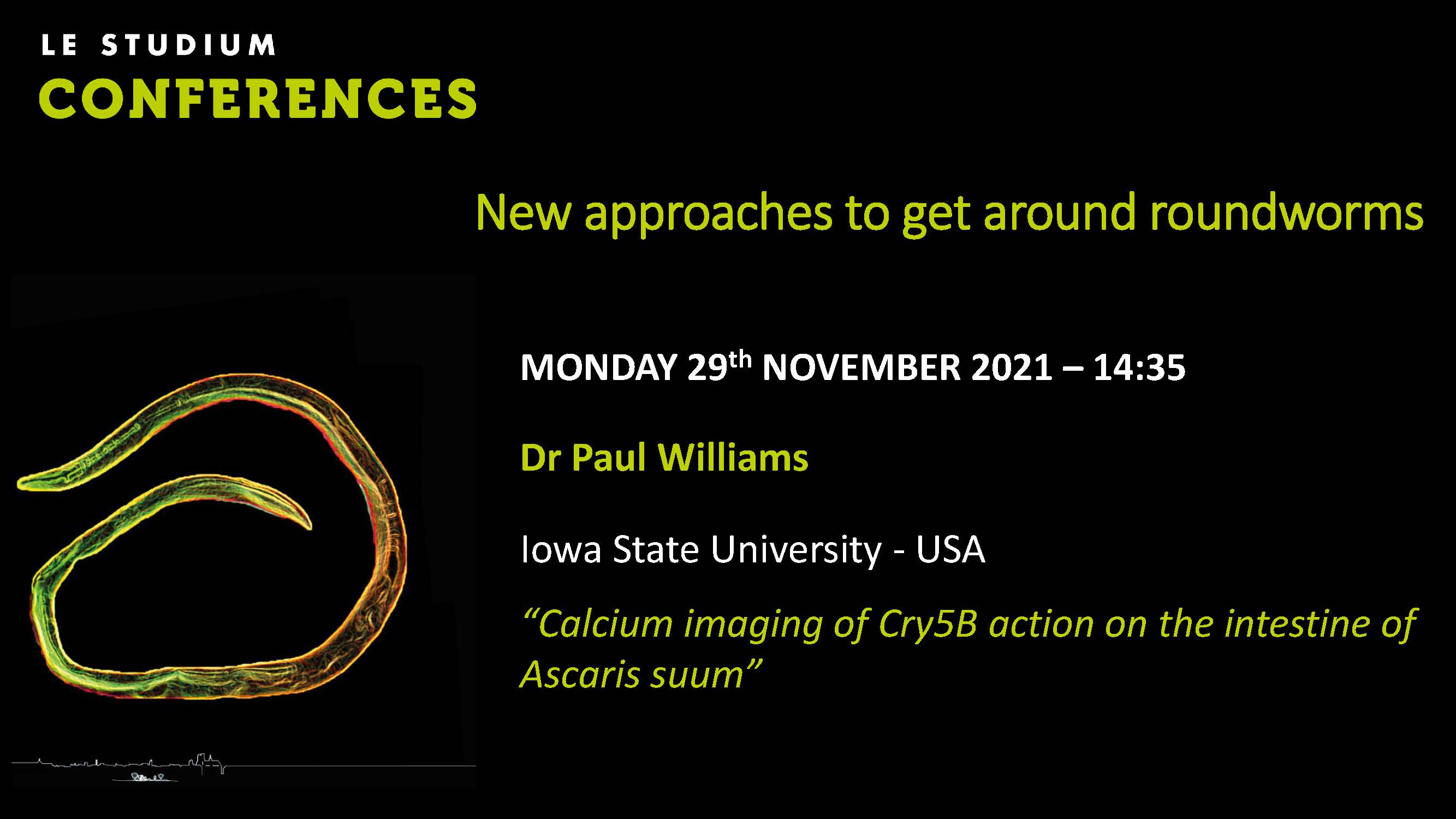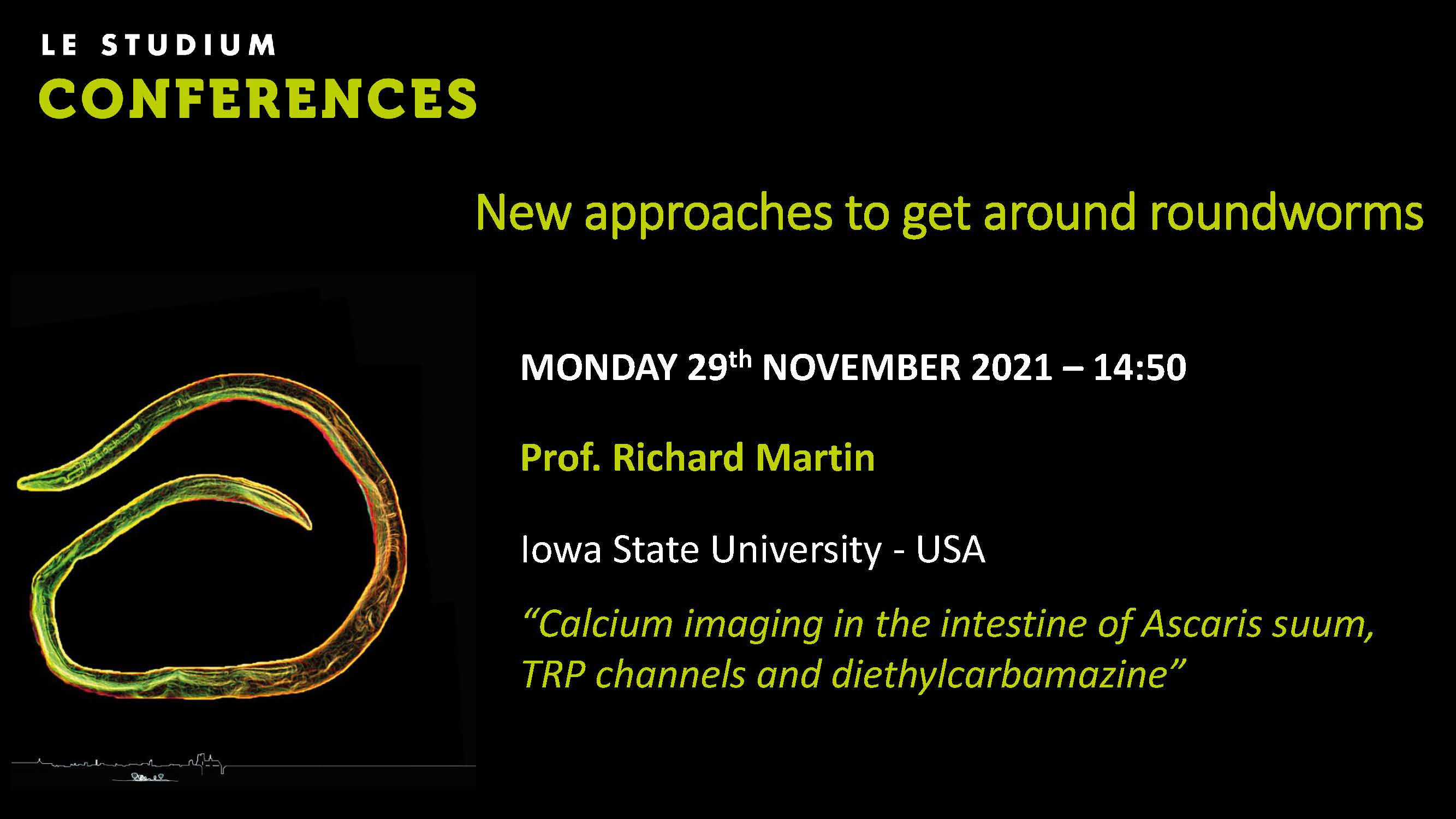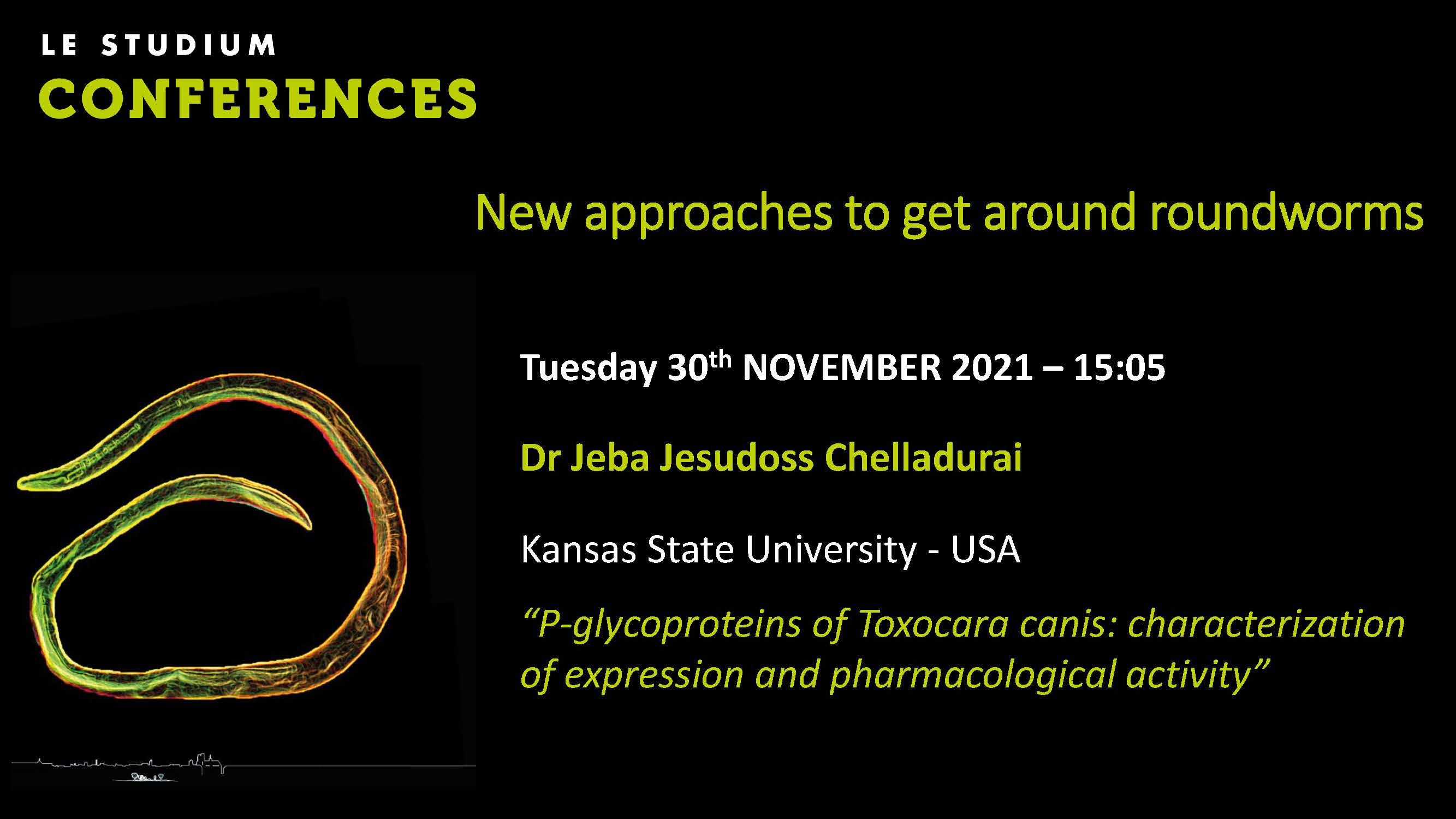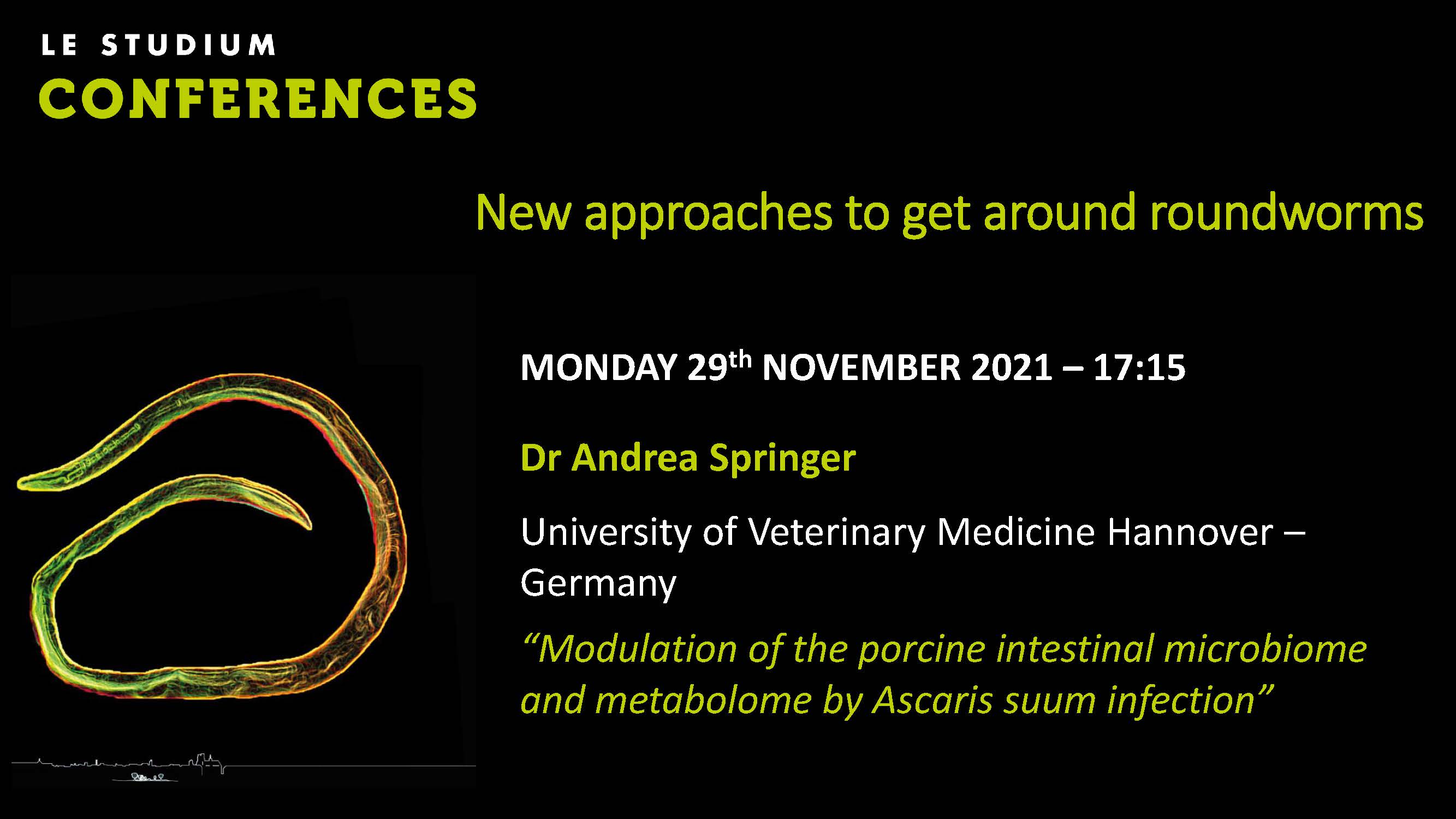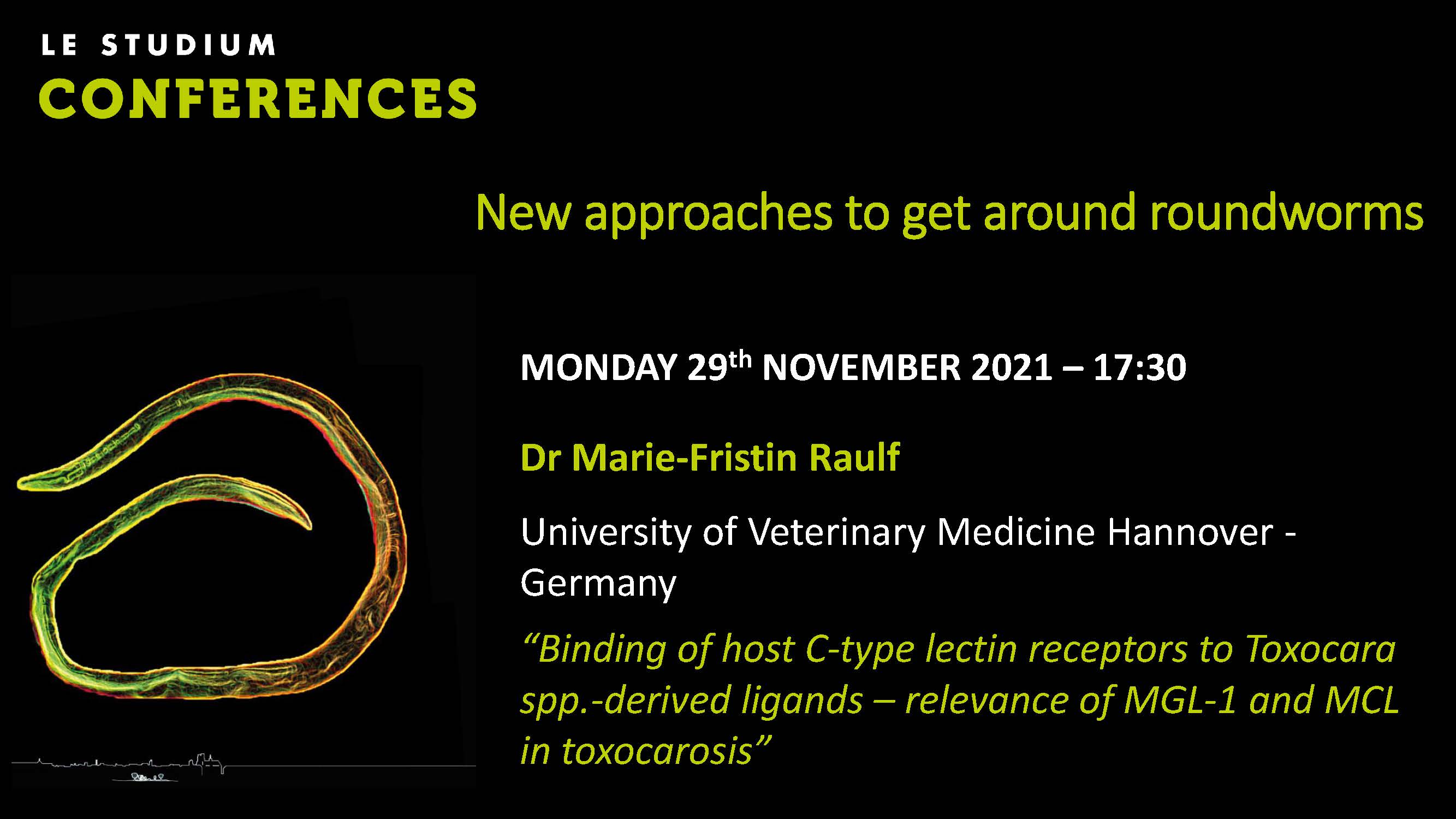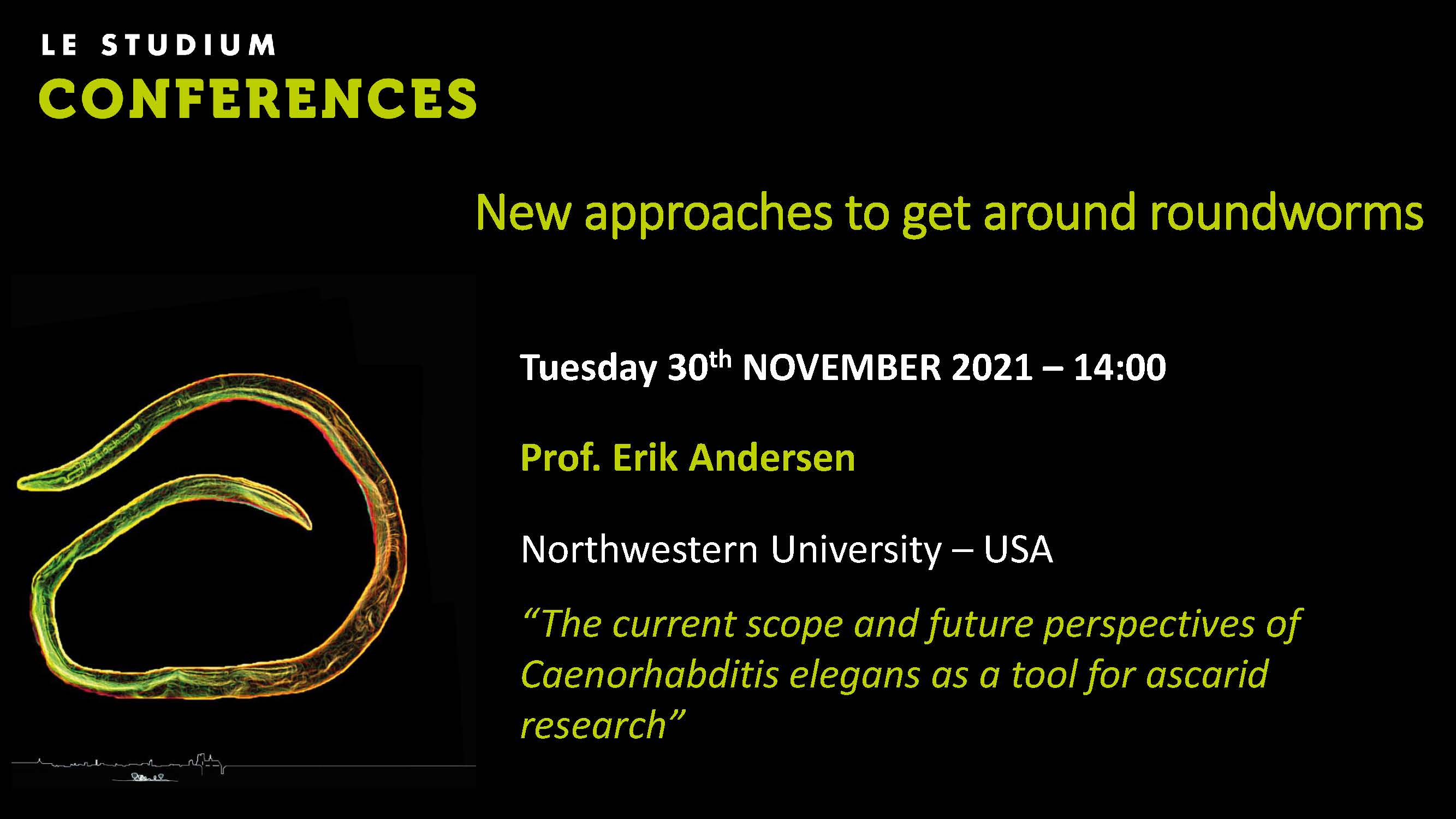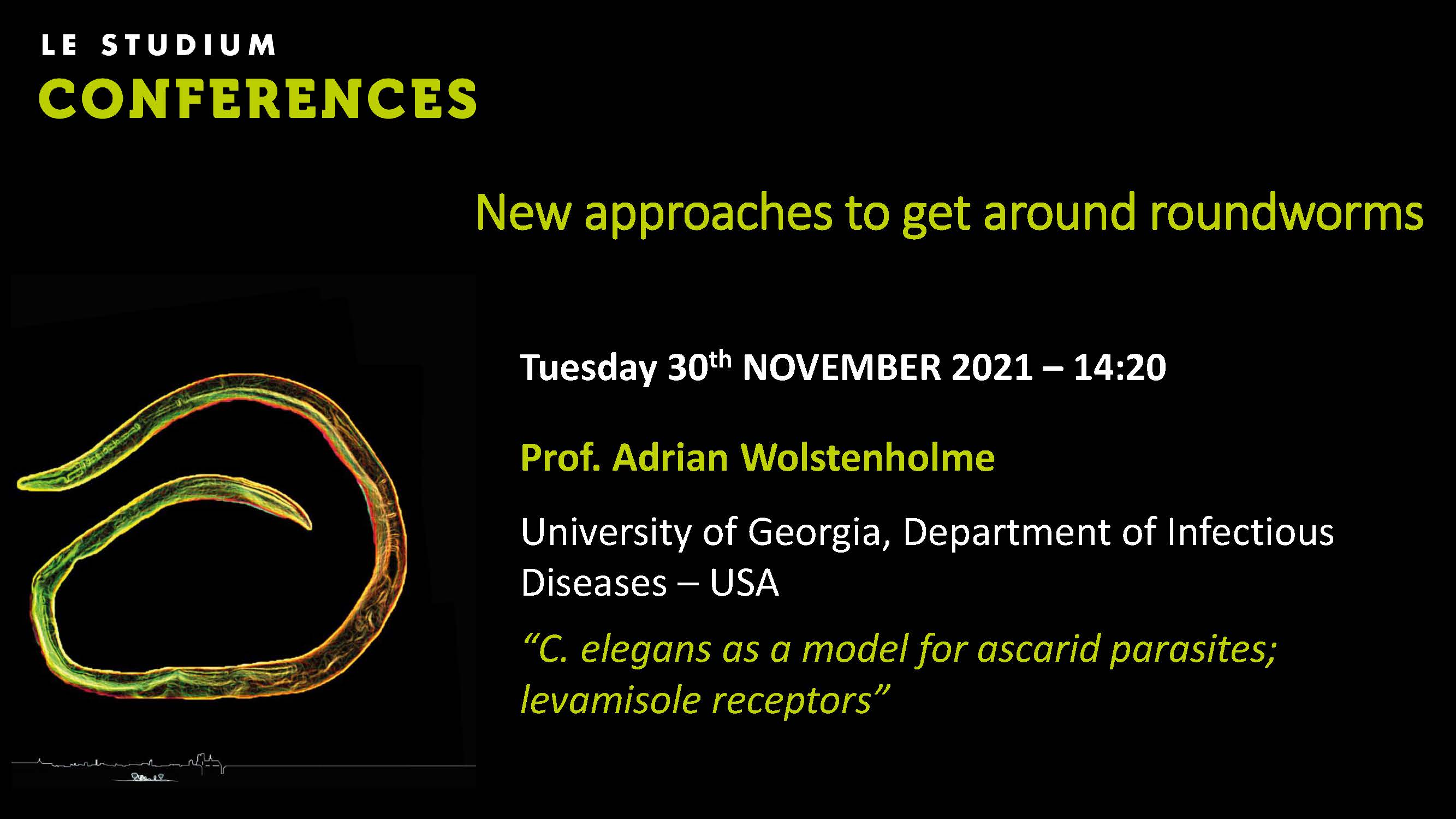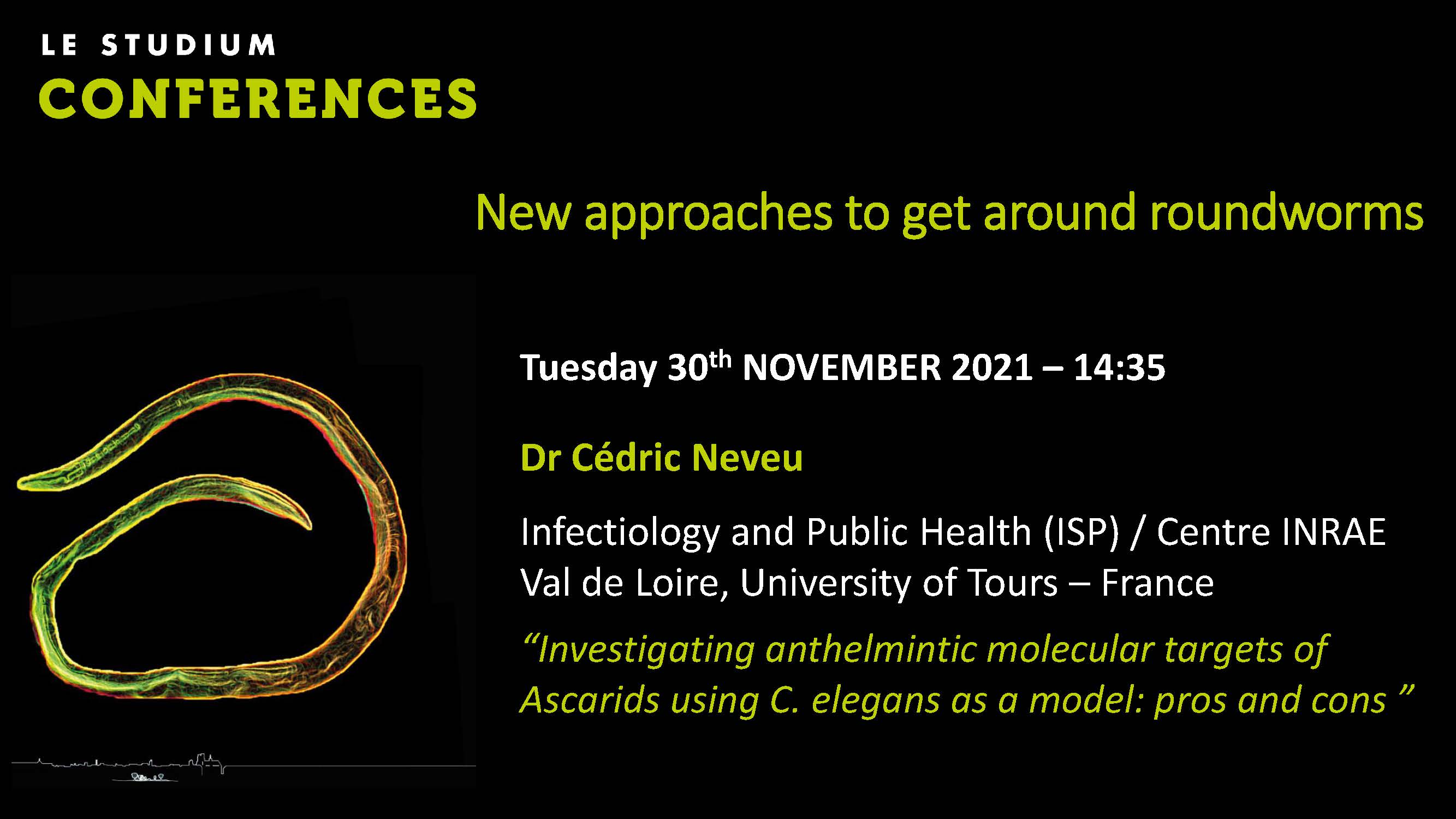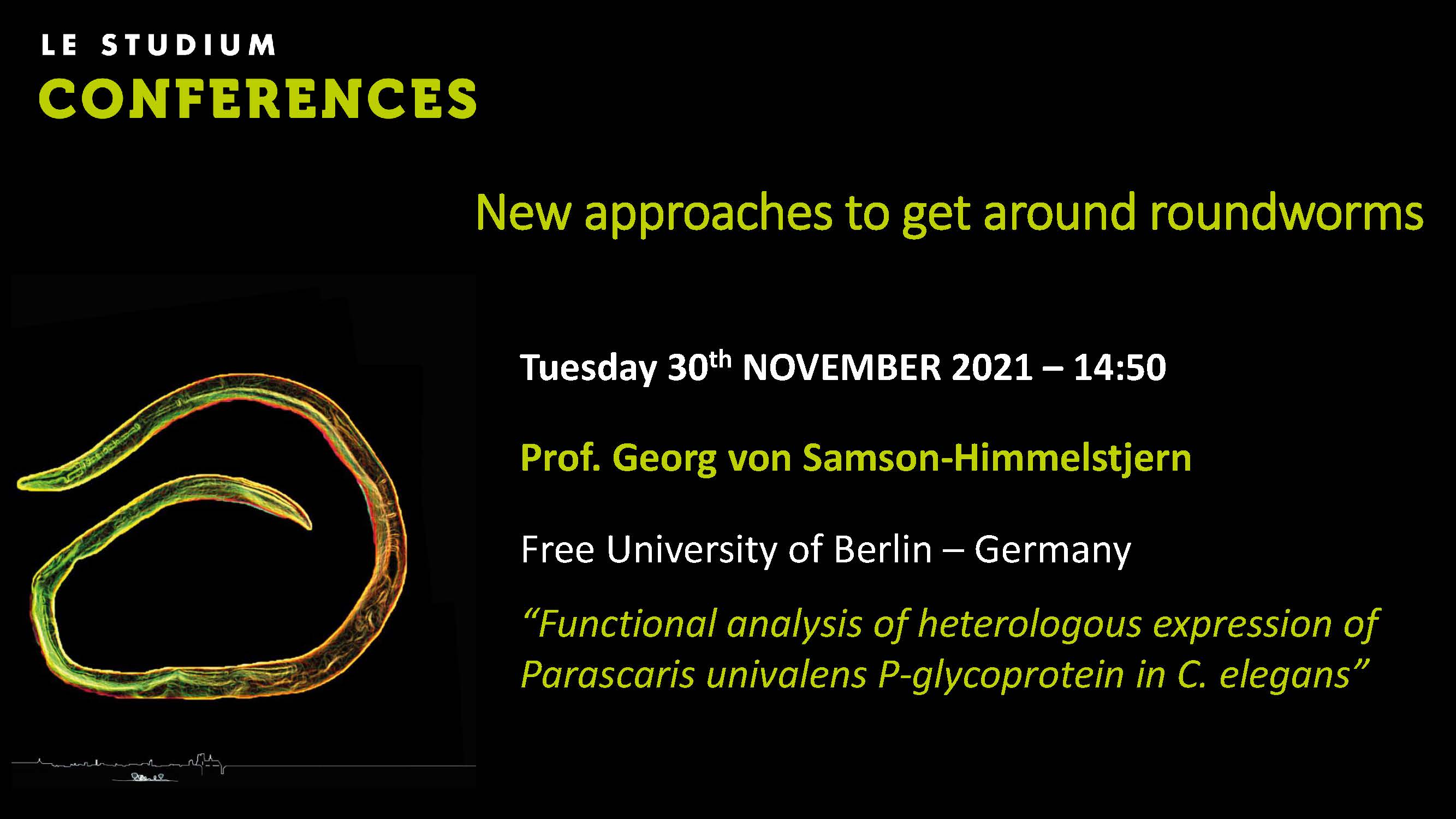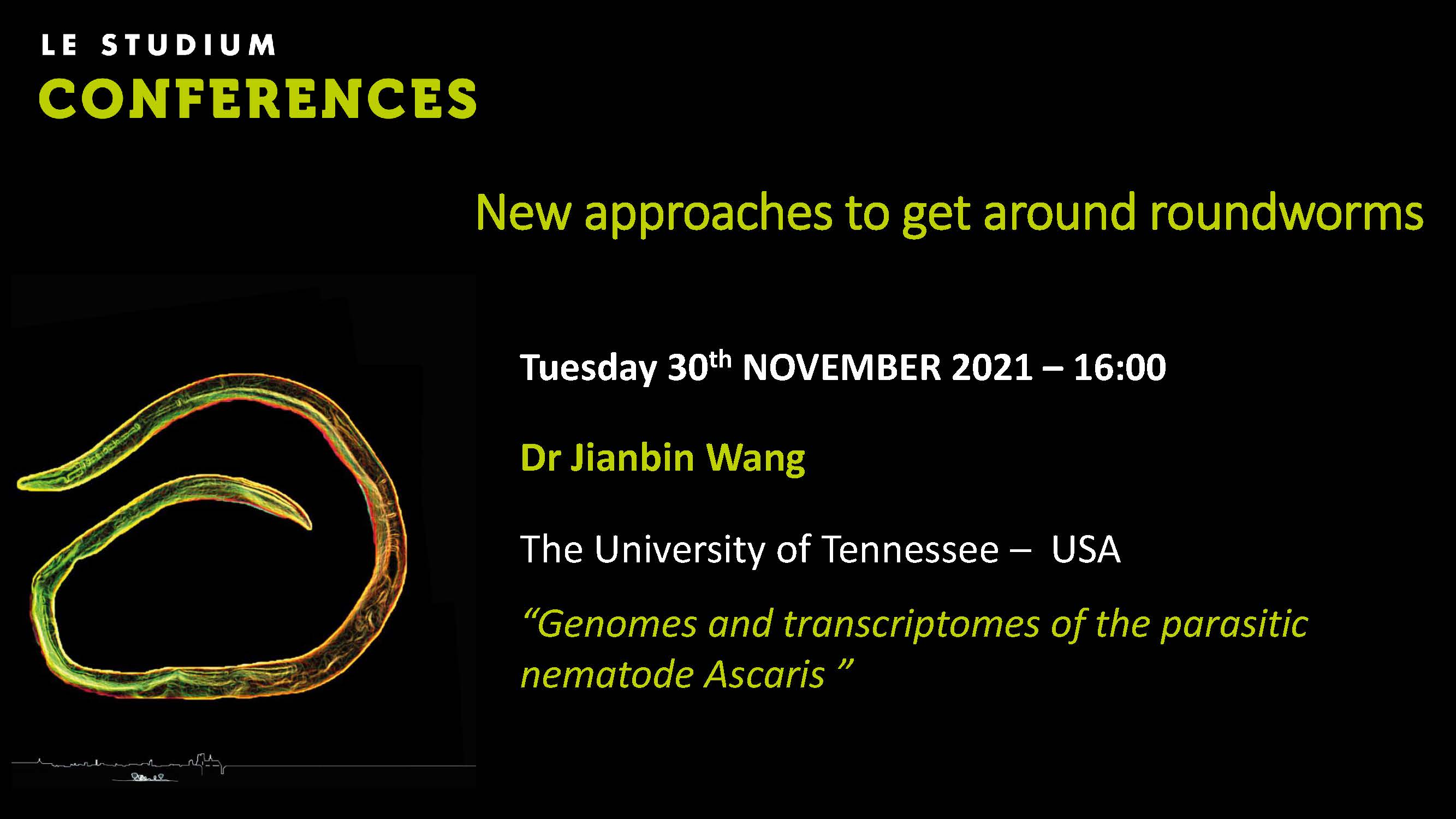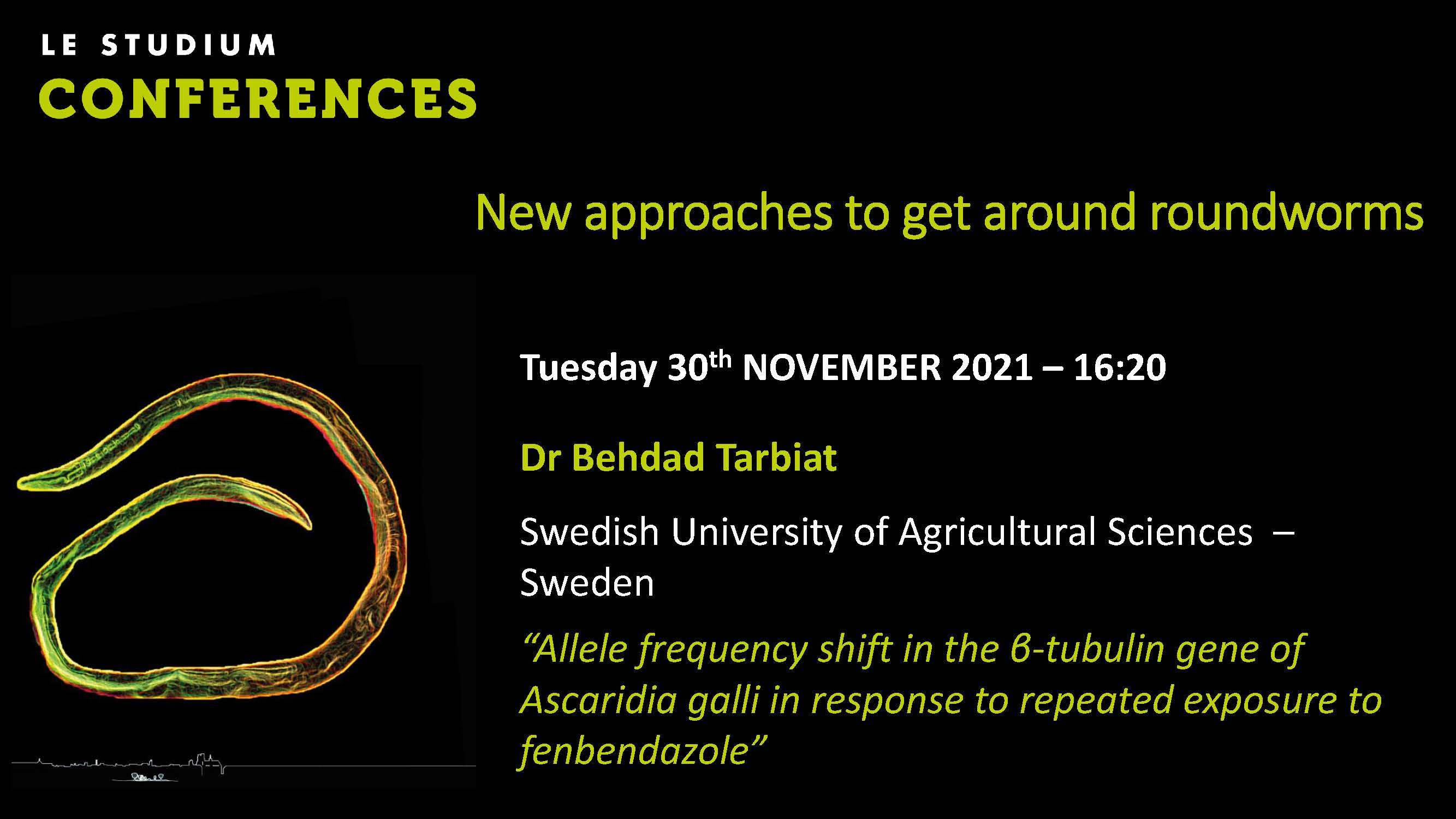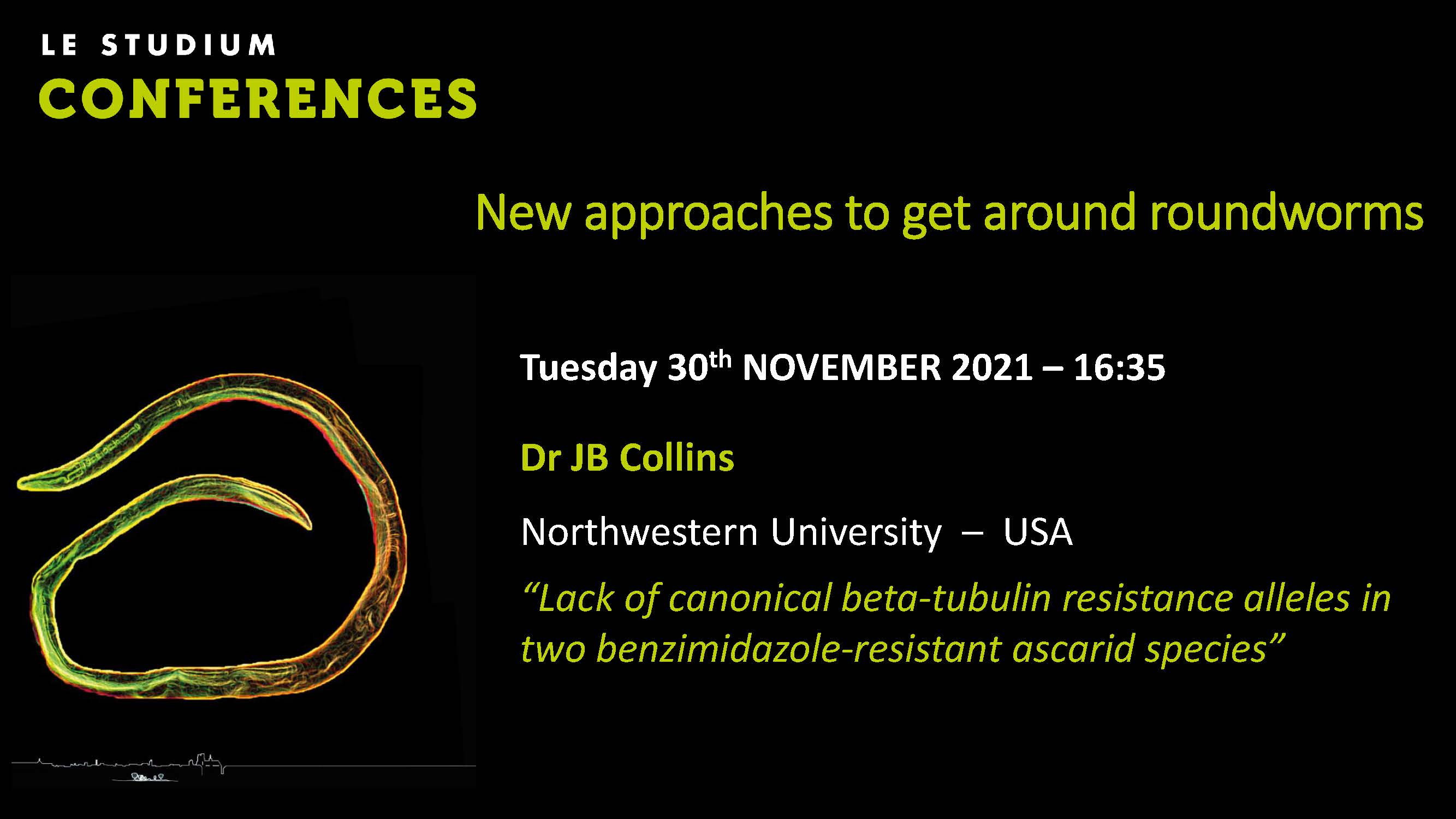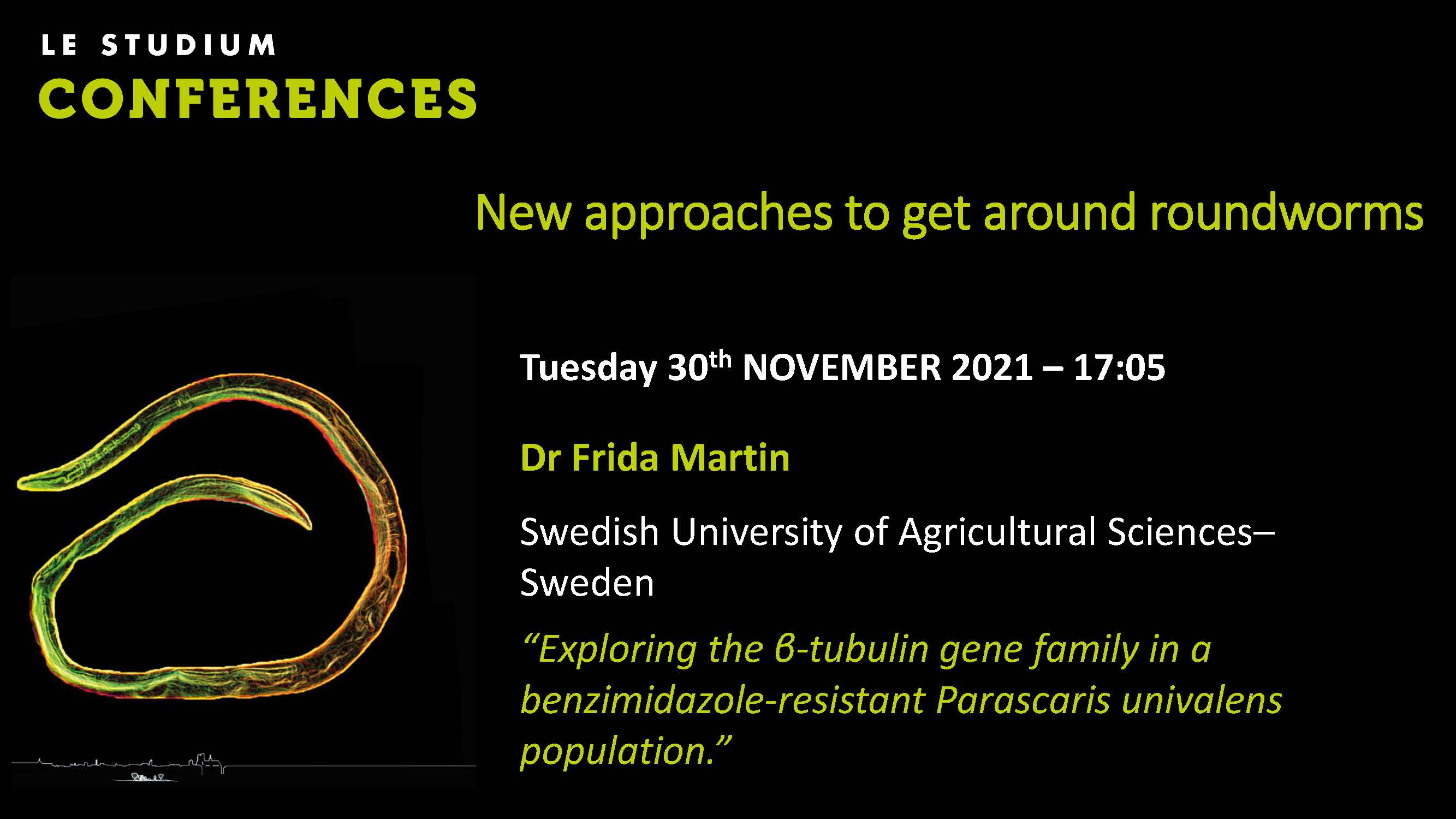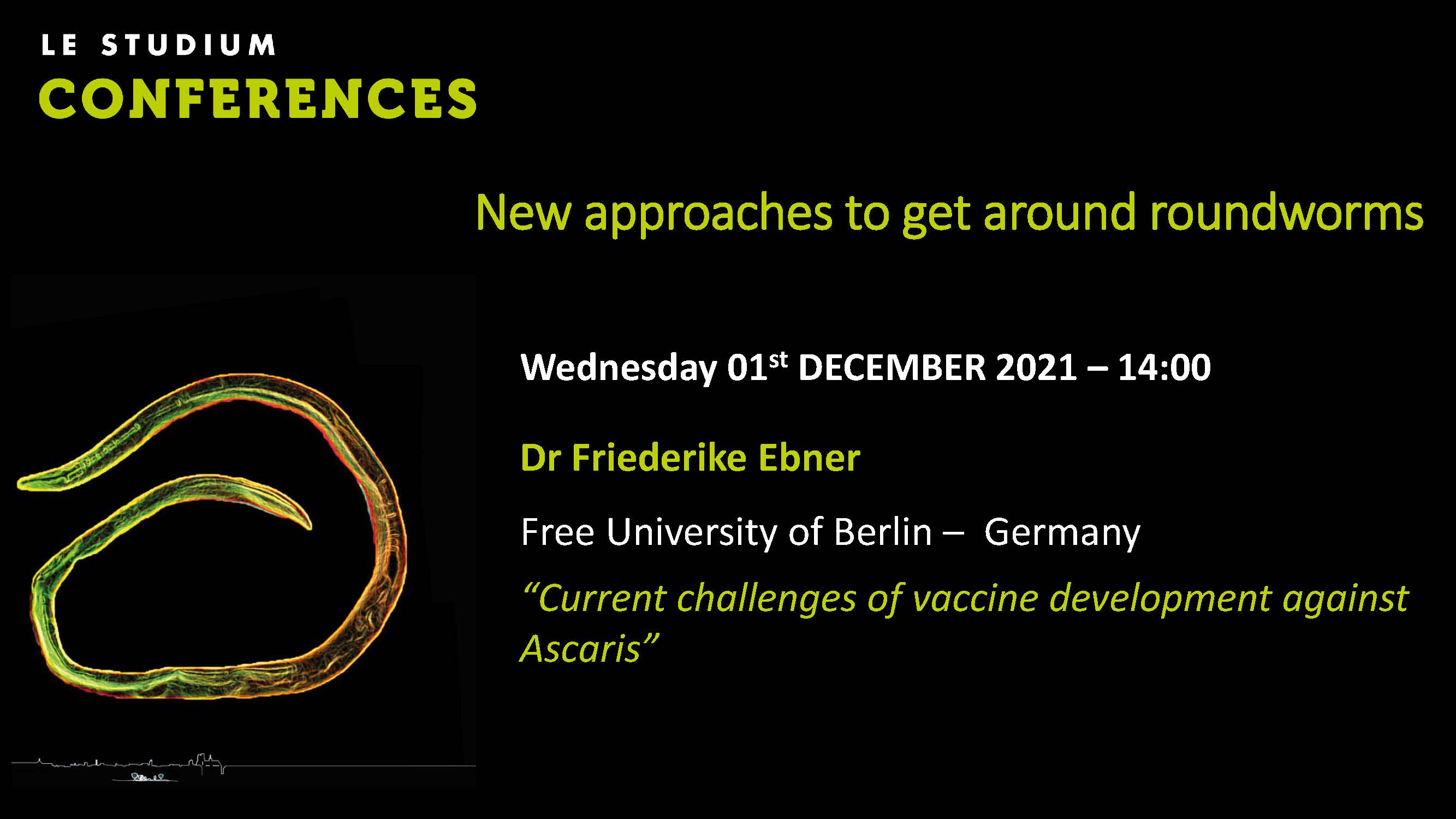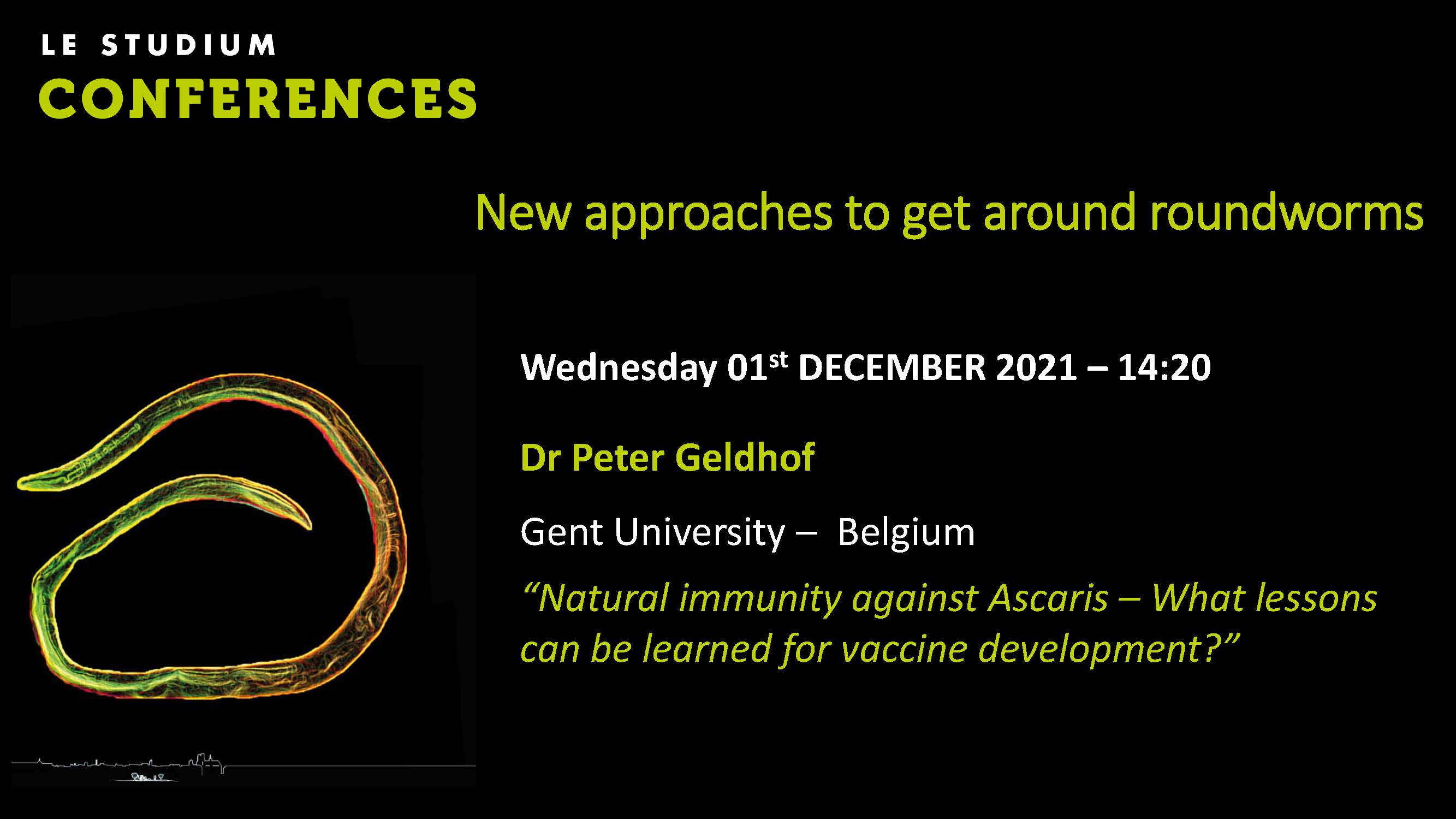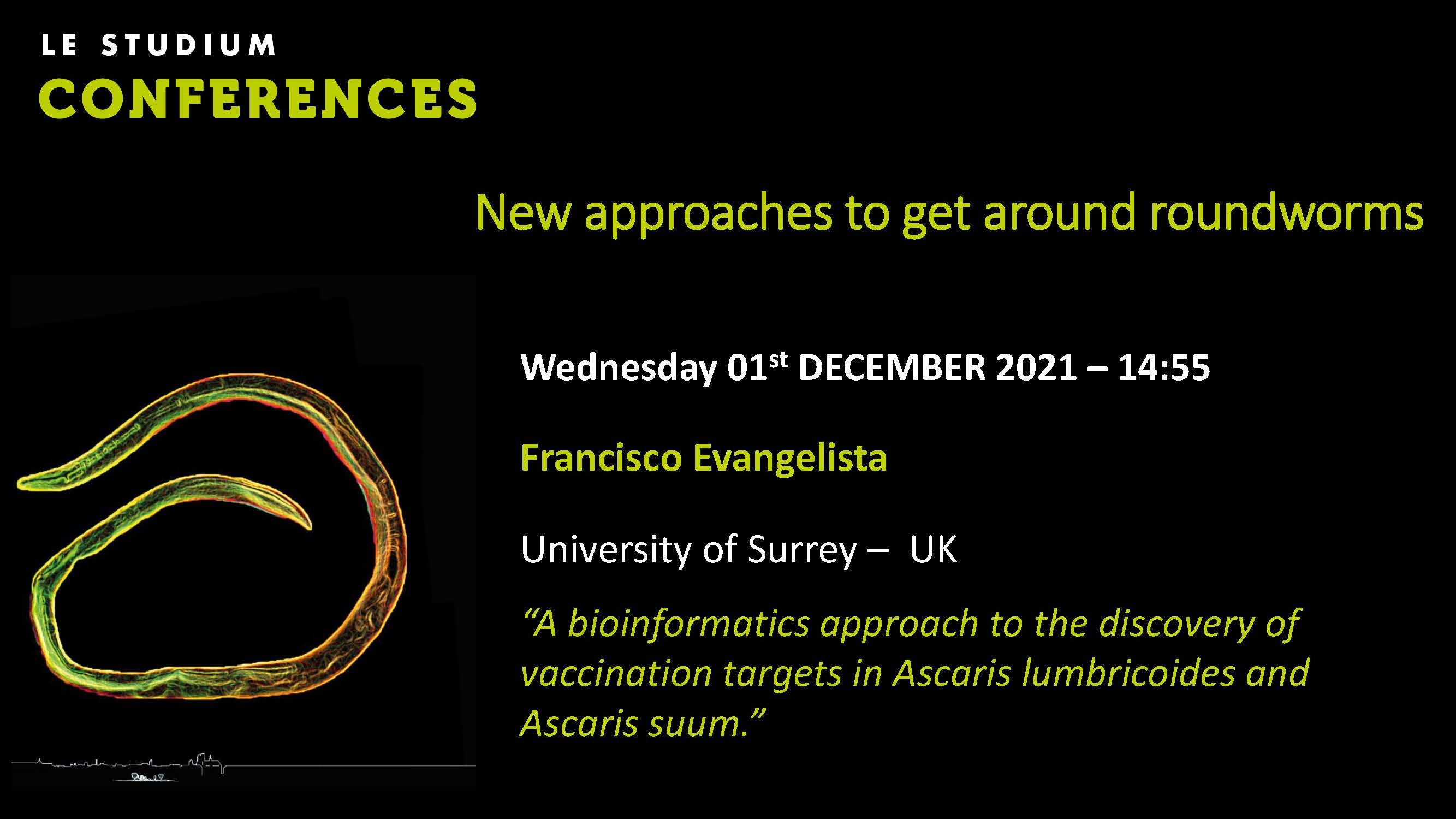New approaches to get around roundworms

Descriptif
Parasitic roundworms, also termed ascarids, share many biological and pathological features, and so a systematic collaborative approach to the study of these offers great synergistic potential in the development of new options for controlling these infections. This group of parasites are highly prevalent and of great clinical importance in human and animals, e.g. pigs, horses, chickens, dogs and cats. Some, such as Ascaris spp. are zoonotic and it is estimated that > 800 million people are at risk of infection with Ascaris lumbricoides. To promote the advancement of science and foster international multi-disciplinary research collaborations to combat diseases caused by ascarid worms, we propose the development of an international collaboration entitled ‘The Ascarid Research and Training Initiative (ARTI)’.
To facilitate this, we will hold a scientific conference including up to five workshops dedicated to the establishment of focus working groups on specific research themes addressing the state of the art in e.g. immune response, drug action and resistance as well as genomic/transcriptomic analyses of ascarids. ARTI will include researchers working on fundamental as well as applied research issues of ascarid infections in human and animal hosts. Academic, private/industrial and governmental research institutions will be involved. Furthermore, linking the conference with a workshop on ‘Approaches and perspectives of Caenorhabditis elegans as a tool for ascarid research’ will promote technology transfer and interdisciplinary research collaborations betw. parasitologists and those working on the ‘model’ nematode species.
Read more : http://www.lestudium-ias.com/event/new-approaches-get-around-roundworms
Vidéos
Prof Lindy Holden-Dye - Ascaris physiology and pharmacology -what next? and how?
In this talk I will review the progress in providing insight into fundamental aspects of Ascaris physiology and pharmacology and the experimental approaches that have been adopted and developed to
Dr Paul Williams - Calcium imaging of Cry5B action on the intestine of Ascaris suum
Crystal (Cry) proteins from Bacillus thuringiensis are used as effective insecticides. These pore forming toxins act within the midgut of insects killing them. Cry5B, has been found to target and
Prof. Richard Martin - Calcium imaging in the intestine of Ascaris suum, TRP channels and diethylca…
The intestine of nematode parasites is involved in more than digestion, absorption and storage of nutrients. It is involved in vesicular trafficking, ageing, innate immunity, drug metabolism and
Dr Jeba Jesudoss Chelladurai - P-glycoproteins of Toxocara canis: characterization of expression an…
The interaction of the macrocyclic lactones with P-glycoprotein have been well-characterized in different ascarids and have been implicated in drug resistance. While adult stages of the canine
Sara Roose - New insights into the use of serology as a diagnostic tool for Ascaris infections in h…
To monitor and evaluate mass drug administration (MDA) programs for soil-transmitted helminths (STHs) the diagnostic standard is the microscopic detection of STH specific eggs in stool smears (Kato-
Dr Andrea Springer - Modulation of the porcine intestinal microbiome and metabolome by Ascaris suum…
Ascaris suum affects feed conversion and weight gain of pigs, but effects on intestinal microbiota remain largely unexplored. Therefore, the intestinal microbiome and metabolome was assessed in pigs
Marie-Kristin Raulf - Binding of host C-type lectin receptors to Toxocara spp.-derived ligands – re…
Toxocara canis and Toxocara cati are worldwide-distributed zoonotic intestinal helminths with frequent exposure to humans in which they can cause severe disease pathology. Upon infection, initial
Prof Erik Anderson - The current scope and future perspectives of Caenorhabditis elegans as a tool …
Ascarid parasites cause a massive burden on people in the developing world and on veterinary animals worldwide. We use a limited arsenal of anthelmintics to treat these infections. As the use of
Prof. Adrian Wolstenholme - C. elegans as a model for ascarid parasites; levamisole receptors
Ligand-gated ion channels provide an excellent test for any expression system and for C. elegans as a model for parasitic nematode species, including the ascarids. They are complex proteins made of
Prof. Georg von Samson-Himmelstjern - Functional analysis of heterologous expression of Parascaris …
This presentation will provide an overview on recent investigations concerning the P-glycoprotein gene family in the equine roundworm Parascaris univalens. As prominent members of the ATP-Binding
Dr Jianbin Wang - Genomes and transcriptomes of the parasitic nematode Ascaris
Nematodes of the genus Ascaris are important parasites of humans and swine, and related genera (Parascaris, Toxocara, and Baylisascaris) infect mammals of veterinary interest. Over the last decade,
Dr Behdad Tarbiat -Allele frequency shift in the β-tubulin gene of Ascaridia galli in response to r…
Despite global spread of anthelmintic resistance in livestock, there has been little discussion about the development of AR in poultry. Ascaridia galli has become ubiquitous in layers due to the ban
Dr JB Collins - Lack of canonical beta-tubulin resistance alleles in two benzimidazole-resistant as…
Management of nematode parasites of veterinary importance has become complicated because of the development of anthelmintic resistance. Resistance to benzimidazoles (BZ) is the most well characterized
Ben Jones - Disentangling the role of Ascaris β-tubulin isotypes in the emergence of anthelmintic r…
Ascariasis affects nearly one billion people, predominantly in the developing world. Ascariasis also affects pigs globally and reduces production yields via decreased growth and condemnation of livers
Frida Martin - Exploring the β-tubulin gene family in a benzimidazole-resistant Parascaris univalen…
Benzimidazole (BZ) resistance is rare in ascarids in contrast to strongyle parasites where this resistance is widespread. In strongyles, single nucleotide polymorphisms (SNPs) at codons 167, 198 and
Dr Friederike Ebner - Current challenges of vaccine development against Ascaris
For more than half a century, scientists have been looking for prevention strategies against Ascarids, however, we still lack fully effective vaccines to protect both humans and veterinary species.
Dr Peter Geldhof - Natural immunity against Ascaris – What lessons can be learned for vaccine devel…
Ascaris lumbricoides and A. suum are large roundworm parasites that thrives in the small intestine of humans and pigs, respectively. The control of ascariasis is currently completely reliant on
Dr Francisco Evangelista - A bioinformatics approach to the discovery of vaccination targets in Asc…
Background: Ascariasis remains the most prevalent zoonotic helminthic disease affecting both humans and pigs and preventive chemotherapy continues to be the most widespread control method.

